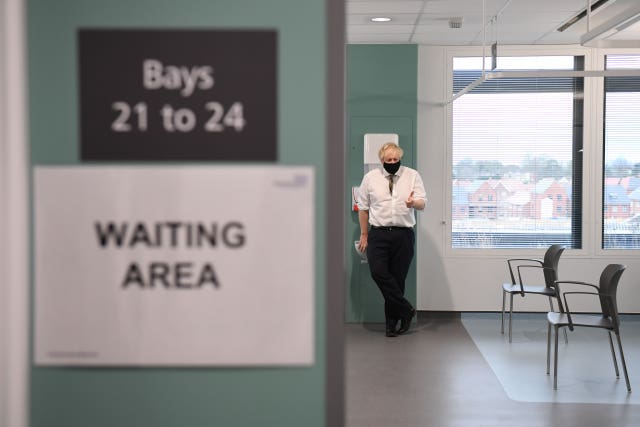Hospitals had concerns over oxygen delivery to patients during pandemic
The Healthcare Safety Investigation branch said in a report that at least a dozen hospitals had to take emergency action to mitigate risks.

At least 12 hospitals had concerns over delivering oxygen to patients during the Covid-19 pandemic, a safety watchdog has warned.
A new report, published by the Healthcare Safety Investigation branch (HSIB) on Thursday, stated that “excessive” demands on oxygen delivery systems in hospitals during the second wave of the pandemic led to a “major disruption”, forcing patients to be diverted to other hospitals and elective surgery being cancelled during the autumn of 2020.
It added that the issues were with the ability of the medical gas pipeline systems (MGPS) delivering the amount of oxygen patients needed, rather than access to the supply of oxygen.
As part of its report, the HSIB has suggested three ways to improve things for the future.

They include prioritising funding and the maintenance needed to improve the infrastructure within oxygen delivery, updating the systems and technical documents to reflect the latest developments in healthcare (the last update was in 2006) and establish a unit within a trust where clinical and non-clinical expertise can map and plan oxygen delivery so it is much more effective.
During its investigation, the HSIB found some hospitals which used a “multidisciplinary approach” to try and plan the use of piped oxygen supply – such as how it was affecting different wards – were able to respond better to the increased demand.
Dr Stephen Drage, director of investigations at the HSIB, said: “Our investigation highlighted just how critical the MGPS is and that if it fails the impact is significant.
“Any uneven demand in the pipework could mean that a concentration of oxygen in one area – for example to Covid-19 patients – could lead to a reduction elsewhere.
“Patient wellbeing can be at further risk as may have to make tough decisions about prioritisation of care to ensure that sufficient oxygen is distributed across the hospital.”
He added the report’s aim was not to criticise the NHS’s response to the oxygen issues, but to “examine and understand” why the existing measures may not have been fully effective.
“The investigation findings and resulting safety recommendations can help to inform future responses to Covid-19 or other respiratory viruses, which continue to be recognised as a possible feature of future global pandemics,” he said.
An interim report published by the HSIB in January urged trusts to check if there were any “limitations” in their oxygen delivery systems.
It came after one London hospital trust declared a major incident after identifying problems with its oxygen supply.
Two patients from a high dependency unit (HDU) were found to have lower than expected blood oxygen levels and were moved to operating theatres where the oxygen supply was guaranteed.
A NHS spokesperson said: “Hospitals worked tirelessly throughout the pandemic to secure, scale up and upgrade their capacity wherever necessary to deliver oxygen, including working with suppliers and other experts to overcome any logistical challenges and no patients who needed oxygen went without.”





